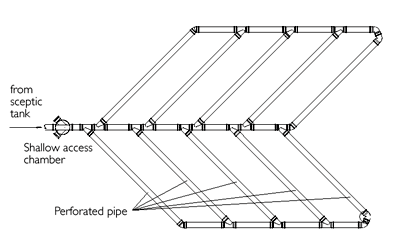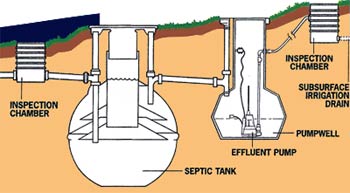HOW DOES A SOAKAWAY WORK?
The principle of a septic tank soakaway is to disperse septic effluent (sewage without a high concentration of solids), into the sub soil at the site.
The size of the soakaway will be dependant on the following factors:
- The porosity of the sub soil material.
- The size of the property and the number of residents it is serving.
- The type of treatment system, i.e. a septic tank or a sewage treatment plant.
Common septic tank soakaways are constructed via long trench lines filled with a clean stone and have a slotted or holed distribution pipe. These trenches can be interconnected (a looped system), a simple long trench, a herring bone layout or a large filled pit.
Any soakaway is very much dependent on the sub soil permeability. This is most important when considering and planning a new soakaway.
A porosity test can be carried out to determine the size of the soakaway required. The lower the sub soil permeability the bigger/longer a soakaway system needs to be.
Another important factor in the operation of a soakaway is the level of the natural water table in the sub soil. If the water table rises above the base of the soakaway the capacity to function is greatly reduced. We can overcome high water table conditions by the use of an effluent pump unit. These units can be accommodated inside some treatment plants or added separately to the outlet side of a septic tank.

A Looped Soakaway System

An Effluent Pump in Use
A septic tank soakaway is not the same as a rain water soakaway. Septic tank soakaways disperse slow flows over a 24 hour period. Rain water soakaways disperse high flows over short periods i.e. during heavy showers. If you need advice on a rain water soakaway.
Return to Septic Tank page
Return to Soakaway Help page
Talk to one of our
engineering team call now on!
